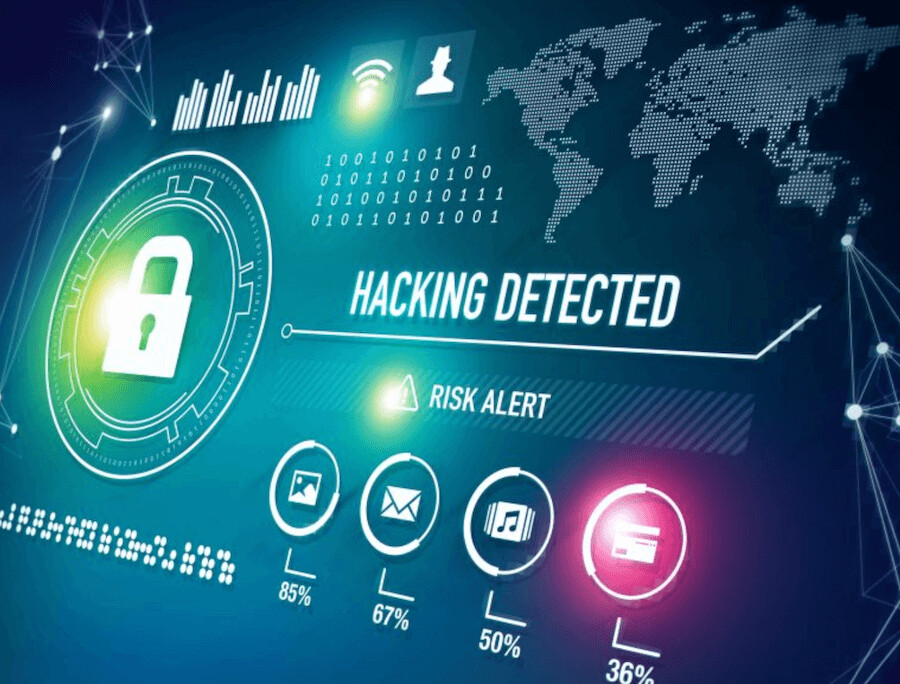PayPal is the latest victim of a large-scale credential-stuffing attack. Over 35,000 accounts were compromised in this latest attack, raising concerns about other enterprises responsible for consumer financial information security.
Credential stuffing is an attack where hackers use bots to match usernames with passwords sourced from websites’ data leaks. In credential stuffing, hackers use bots to log in to PayPal accounts by matching usernames with passwords.
In this latest onslaught, PayPal reports that credential stuffing occurred between the 6th and 8th of December, and although mitigation commenced immediately, the attack affected 35,000 accounts.
It’s important that enterprises, regardless of industry, scale, or scope, remain aware of this glaring reality of cybercrime. Hackers often sniff networks, test the functionality of firewalls, and match usernames and passwords sourced elsewhere before exploiting every known and unknown vulnerability.
That’s precisely why you need to know whether your company is at a cybersecurity risk. But how can you tell whether you’re a target of a cyber-attack?
Below we discuss some ways to know the cybersecurity risk of your company.
1. Lack of Cybersecurity Training
Your employees may have the best interest at heart, but they may be an unintentional cyber liability in case of an attack. According to Verizon’s 2019 Cybersecurity Investigation Report, over 94% of malware was delivered by mail.
Malware attacks try to convince employees to open a file or download a folder that may potentially install malware on their computers. Most malware emails may be highly sophisticated, prompting employees to think they are from a known vendor or a business partner.
Proper cybersecurity workforce training is a critical first step to protecting your company from a possible attack.
2. Trouble Logging In
Logging into your systems is second to nature, particularly to employees who’ve been around your company for a significant period. Logging to known websites or accounts is an everyday process that demands a firm grasp of the login information.
Unfortunately, you may be a target of a sophisticated cyber-attack when your login process hiccups. Hacking your organizational systems doesn’t have to be a widespread problem. One hacker requires access to your systems via a single employee before they wreak havoc on the entire system.
There are two hacking possibilities for any hacker. First, they may fail to log in and lock an account or website. Secondly, they may successfully log in and barricade themselves inside to initiate additional malicious attacks.
So, if your employees are facing problems logging in to known websites and accounts, there’s a likelihood that your system is ripe for compromise. Cybersecurity training proves crucial in equipping employees with the knowledge and training needed to identify risky interactions with outside parties.
3. Slow Internet Speeds
While internet speeds vary depending on the bandwidth and the number of users in a given network, in most cases, slowdowns indicate a potential attack. Consistent slow internet speeds may suggest a potential onslaught is on the wait.
When internet speeds are low, it indicates that a hacker may have penetrated the network with unknown software. This software begins using your networks or internet as it initiates malicious attacks, thus slowing down the internet connection speeds.
Therefore, evaluating network data to sniff out potential attacks is advisable.
4. Inadequate Physical Security
While you should certainly ensure adequate digital security, you cannot ignore the power and the benefit of all-around physical security. When someone breaks into your office and accesses all your computer files, the results could be equally as devastating as breaking into your digital internet security.
It’s important to note that deficiencies in physical security also extend to government facilities where you expect fully-fledged physical security. Auditing reports have established that physical security in some Department of Defense (DoD) offices is inadequate.
Failing to lock up your server racks may lead to file and data compromise by workers and intruders. Similarly, workers or officials may fail to secure sensitive or confidential files, thus leading to these files getting into the wrong hands.
So, physical security is critical in protecting your organization’s integrity and confidentiality.
5. Multi-factor Authentication (MFA)
Despite calls to have multi-factor authentication, research by Statista found that 65% of users use similar passwords for multiple accounts and websites. This means that a breach on one user could result in breaches on multiple users.
As with PayPal, cybersecurity stuffing attacks occur when users have a similar set of credentials, like usernames and passwords for discrete accounts or multiple websites.
For instance, if your email login credentials are similar to your PayPal credentials, it’s possible that hackers can access both your email and PayPal with one set of credentials.
So, if your employees do not have multi-factor authentication, particularly relating to business accounts, it’s a possible sign your company is at a cybersecurity risk.
6. Failure to Reassess Your Security Programs
Failing to evaluate and re-evaluate your cybersecurity programs is a telltale sign your enterprise is at risk of a cybersecurity attack. Anti-virus programs and patching software must be reassessed to ensure they’re up and running in case of a digital onslaught.
While most organizations understand the benefit of installing anti-malware and firewall programs, not all enterprises know that these programs are not created equally. So, if you prefer a less-than-adequate cybersecurity program that doesn’t update itself to protect against new attacks, you’re at risk of potential attacks.
7. Unfamiliar Computer Action
If your computer or software system starts to act a bit off the normal behavior, it’s a possible sign you’re under attack. Usually, when hackers or unauthorized users access your computers or system, the software they use affects the normal functioning of your computers.
Usually, these signs are clear but ignored. For instance, you may notice new installs you never purchased or authorized. Alternatively, you may notice emails in the form of malware coming from unauthorized sources unknown to your enterprise. Sometimes, the cursor may move on its own, or the keyboard may malfunction.
Another sign is that your anti-malware software may fail to function, and your firewall programs may stall without inside interference. All these subtle signs point to a possibility of a cyber-attack. So, although computers may glitch without interference, you cannot fail to investigate these inconsistent behaviors when you consider the severity and intensity of an attack.
Take Action to Protect Yourself
Hackers and unauthorized users work day and night to identify and exploit network vulnerabilities. And from your customers’ financial information to proprietary product information, you cannot fail to protect yourself from unknown users or hackers.
At Edafio, we provide end-to-end cybersecurity services, helping your systems to remain up and running in case of a potential attack. At Edafio Technology Partners, we understand that sometimes attacks can come unnoticed. That’s why we are committed to helping you throughout this cybersecurity journey.
Contact Edafio to reinforce your digital security infrastructure.
READY TO GET STARTED?
Make an Informed, Scalable Decision with Edafio








